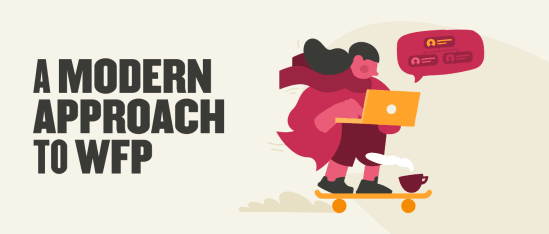Planning for workforce expansion and shrinkage is one of the most challenging tasks HR teams have to face, especially in today’s market. But workforce planning (WFP) is also one of HR’s most crucial tasks.
Traditionally, companies have looked at workforce planning on a seasonal or annual basis. However, today’s fast-evolving work world calls for more progressive HR strategies that enable companies to pivot quickly and meet changing market demands.
This piece makes the case for ongoing workforce planning, explains its benefits, and why seasonal and annual WFP may not be the best fit for today’s fast-paced, constantly changing world of work.
Why ongoing workforce planning suits today’s business needs
The world is in a state of constant flux. For companies to thrive and succeed, HR leaders must implement flexible strategies that enable their recruiting methods and headcount plans to keep up and change with the times—and fast.
With increased reliance on global hiring strategies, HR teams must look at today’s market and shift with it quickly. Between the “Great Resignation,” global inflation, and talent shortages, this is the time for ongoing workforce planning. Here’s why.
The most successful businesses today are agile and quick
Traditional seasonal (or annual) WFP doesn’t allow for quick pivots in response to change—internal or external.
Not so long ago, HR and business leaders could look forward and know more or less what their businesses could expect in the coming year. Today, this type of planning is impossible because tomorrow is unpredictable.
Two main drivers of these major shifts in the market are the economy and the multi-generational workforce. COVID served as a catalyst for people to rethink their priorities in the workplace, lining up more and more with the ideals of Generation Z (or Gen Z) and Millennials. The two youngest generations in the workforce place an emphasis on work-life balance, flexibility, the personalization of work relationships, and a fundamental and ongoing reliance on technology.
HR departments must remain on the ball when it comes to economic and workforce trends. For example, 93 percent of today’s workforce says empathy is a huge part of retention. According to Gartner, 43 percent of people surveyed stated that flexibility in working hours is the main reason for increased productivity today.
Incorporating information like this into people-centric HR strategy can help businesses remain agile, enabling them to craft workforce planning programs equipped to adjust quickly to the current climate, whether it’s an economic recession or boom—or any other market shifts.
HR’s close alignment with finance and other departments is critical
Ongoing WFP relies on HR teams syncing with their counterparts in finance at all times. This is a good thing for organizations.
When HR and finance work closely together and maintain transparency, there’s better data reporting and sharing, resulting in a more in-depth understanding of cross-company needs. Combining this with ongoing evaluations of global workforce trends, the company’s needs, and budget capacity is the key to building an agile recruiting and retention strategy. This is the “secret sauce” to driving successful workforce planning programs in today’s fast-evolving global work landscape.
The same goes for the relationship between HR and other departments, including sales, customer support, and marketing. Each team needs to work together to understand today’s professionals’ needs and meet them accordingly.
Be prepared for anything
Ongoing workforce planning doesn’t mean HR professionals must frantically create new strategies as the workforce adapts to an unending parade of recent trends. Instead, it means crafting flexible strategies that can adapt quickly and provide companies with a workforce equipped with the skills, experience, and knowledge they need now.
For example, a company can employ “liquid teams,” a talent management technique that creates and disbands teams on a project basis. Using liquid teams affords high levels of flexibility, accounts for people’s various skill sets, and leverages different skills (e.g., computer programming vs. project management) for various projects.
This allows companies to keep talented people in their workforce even when their initial job description and skills become less critical or obsolete, depending on the market climate and changing business needs.
Using HR tech to help make data-driven decisions is another great way to stay prepared. A comprehensive HR platform can help decision-makers evaluate their workforce and its strengths more accurately. HR automation and data analysis are there to help HR teams understand which team members may be in the position to move up in the company. HR tech can also help identify internal candidates who can transition to new roles and which roles require an external hire with skills your current workforce lacks.
Recommended For Further Reading
What does ongoing WFP look like for HR leaders?
Ongoing WFP can be time-consuming if an effective strategy isn’t in place. Creating this strategy is essential to ensuring HR teams have the bandwidth to integrate ongoing workforce into their day-to-day routine.
Some of the essential parts of such a strategy include:
- Anticipating upcoming business functions and positions that weren’t needed before
- Hiring worldwide as a strategy to prepare for worldwide expansion and cross-cultural business
- Evaluating headcount and the company’s needs moving forward
- Listening to business managers from all departments to understand their needs
- Being flexible and adjusting your WFP strategy as you go
HR leaders who have integrated ongoing workforce planning into their business won’t need to stress about integrating this work into their daily operations. An effective strategy means that an HR team constantly evaluates its needs, makes adjustments, and is always prepared.
Ongoing WFP is a win-win for everyone involved
No matter how you look at it, ongoing workforce planning is a win-win situation. Agile strategies are the way to go in today’s unpredictable world of work. They provide HR teams with the flexibility and resilience they need to pivot fast at any moment, giving businesses the tools and knowledge they need to grow and thrive.
Constantly evaluating the market enables organizations to analyze their talent, understand the trends they must adapt to, and stay ahead of the game.


